Do you want healthy and happy fish?
Stupid question. Of course, you do!
In my 30 years of fish keeping, I find that one of the biggest impacts on the health of fish is…
Water quality
Just one problem….
In an aquarium setup, poor water quality and good quality water can look identical. Let’s say that the water in your aquarium has ammonia levels that are too high. The problem is that you cannot tell with your eyes.
But to your fish, the difference is obvious. Painfully obvious. Since poor water quality can cause your fish stress and also lead to disease and even death, it’s something that you want to monitor closely.
Seriously, take these two test tubes filled with water from two different aquariums…
They look identical, right?
Well, the water on the right actually contains enough ammonia to kill most fish.
While the water might look fine to you, your fish could be suffering!
So, how do you test for something that your eyes can’t see?
That’s where an aquarium test kit comes in – the best way to test the water quality in your aquarium!
[sc name=”aquarium-test-kit-text-links-code”]
Freshwater Master Kit 5/5
| ||
Saltwater Master Kit 5/5
| ||
Reef Master Kit 5/5
| ||
Pond Master Kit 5/5
|
Contents
What is an aquarium test kit?
An aquarium test kit is designed to measure a specific water parameter.
I know, I know, measuring things is boring! But if you want to have any success keeping fish, then it’s something you must come to terms with.
The reason a test kit is so important is that an imbalance in water parameters can cause chaos in your tank. For instance, take nitrites – if the levels in your tank rise too high, your fish are going to die.
By constantly testing the water with a test kit, you ensure the water parameters are within safe levels and quickly act if they are not – saving the lives of your fish!
Your average test kit will contain the following:
- Instructions
- Test tube
- Testing solution
- Color card
To put it simply, you add both aquarium water and a few drops of testing solution to the test tube. Wait for the solution to change color and compare it to the color card to get a result.
Sound confusing? Don’t worry, it’s really easy. I’ll guide you through the steps of using a test kit later in this guide.
While it might not look like much, this simple little kit is your frontline defense in the battle for good water quality… It doesn’t matter whether you are a beginner or expert, a test kit is an essential piece of aquarium equipment. You must have a way to test the parameters of your water!
You should also note that a test kit is only capable of analyzing a single water parameter. That’s right, just one. You need to purchase a test kit for each water parameter that you want to check.
Some of these parameters include:
- pH
- KH (Carbonate Hardness)
- GH (General Hardness)
- Ammonia
- Nitrite (NO2)
- Nitrate (NO3)
- Calcium
- Iron
- Copper
- Phosphate
- Potassium
- Silicate
- Iodine and Iodide
…to name a few.
So, if you want to test for everything on that list, you need to buy 13 different test kits!
Fortunately, you won’t need most of these. The exact parameters you need to test for entirely depends on your tank setup.
In fact, for most beginners, you only need a few test kits to get started – ammonia, nitrite, nitrate and pH. And possibly KH, depending on your water source.
And the best news?
Every test the average beginner needs for their aquarium comes in a single, cheap and affordable kit. When multiple test kits are packaged together, it is referred to as a master test kit.
And, one master test kit outshines the rest…
What is the best beginner’s aquarium test kit?
The API Master Test Kit. Not only is it affordable and easy-to-use but accurate enough to give any beginner a good understanding of what is happening in their tank.
And best of all, they can be found anywhere. I would actually be shocked if your local fish store didn’t keep API Master Test Kits on the shelf.
The API test kit comes in four variations – Freshwater, Saltwater, Reef and Pond. Each of these tanks has different water quality requirements, so API has made a master test kit to suit each tank with its own specific tests…
| API Test Kit | Contains… |
|---|---|
| Freshwater Master Kit | Ammonia, Nitrite, Nitrate and pH |
| Saltwater Master Kit | Ammonia, Nitrite, Nitrate and high range pH |
| Reef Master Kit | Calcium, KH, Phosphate and Nitrate |
| Pond Master Kit | Ammonia, Nitrite, Phosphate and pH |
Each master kit contains enough tests to lasts for years. If you run out of a specific test kit, you can buy refills separately – although between you and me, it’s cheaper just to buy the complete master kit than each refill on its own!
But perhaps my favorite part about master test kits is that they keep all your testing solution bottles neatly organized in a single container. It’s easy to accumulate a collection of test kits and if you lose those bottles, they are useless!
How neat is that?
While there are many other brands on the market, the API kit is one of the most affordable. Combine this with reliable results, and it is the hands-down best aquarium test kit for beginners.
How do you use an aquarium test kit?
Using an aquarium test kit is so simple that even my mother could do it. Even with her shaky hands and poor eyesight. Love you, Mom!
To show you just how easy these test kits are to use, I’ll take you through the process of using an API test kit to find the pH of my aquarium.
Step 1: Filling the test tube
You see that water in your aquarium? Well, you are going to have to get some of it into this tiny test tube.
While you can dunk the test tube in your aquarium to fill it, it’s difficult to measure out an accurate amount – the API test kit I use here requires 5 ml, to the line on the test tube.
Another reason why you shouldn’t dip the test tube into your aquarium – Any leftover chemicals from the last test can sneak into your tank.
I have an better method…
I use a disposable pipette like these to transfer the water. Trust me, when it comes to accurately measuring out aquarium water for a test kit, these things are a godsend.
Step 2. Add your testing solution
Next, grab the testing solution and add three drops to the test tube. A colored cloud will begin to form in the water as the drops are added.
Check that the testing solution hasn’t expired – the expiration date should be printed on the packaging. Using an outdated test kit could present accuracy problems. Fortunately, test kits generally have a long shelf life. The test kit I picked up for this guide doesn’t expire for four years!
Step 3: Shake, Shake, Shake
Give the test tube a light shake. Doing so will make sure that the testing solution has evenly mixed with the water. The mixture inside the test tube should now be a single, uniform color.
Step 4: Match it up!
Now, all that’s left to do is to match the color of your test tube with the color chart that comes with the kit. Whichever color is closest is the result.
An aquarium test kit and two minutes of my time reveals that the pH of my aquarium is 6.4.
An accurate result in minutes. It’s no wonder why test kits are the most popular method for testing aquarium water.
Note: Always refer to the instruction manual for your specific test kit. The exact steps that you need to follow can vary between test kits, even for the same brand. If you don’t follow the instructions, your results may not be accurate.
How often should you use an aquarium test kit?
When you first cycle your aquarium, you should test your water every day so that you can keep an eye on how your new tank is progressing through the nitrogen cycle.
Once your tank is set up and cycled, and you have developed a good maintenance routine, you can drop the testing down to once a week.
Of course, if you notice any irregularities in your aquarium, such as stressed fish or cloudy water, test immediately – you might find that a single water parameter is responsible for the issue.
How accurate are aquarium test kits?
In terms of accuracy, aquarium test kits sit in the middle of the road…
- Test strips – Least accurate, and I recommend that you avoid them.
- Test kits – Accurate
- Scientific meters and probes – Precise
While test kits are accurate enough for most fish keepers, they are far from precise.
To understand what I mean, let’s look at this nitrate color card that was included in one of my test kits…
Notice how the scale increases in large increments? Jumping from 0 to 2.5 isn’t exactly pinpoint accuracy.
But again, this isn’t an issue for most of you.
You see, the difference between a nitrate level of 0 and 0.01 makes little difference to the average fish keeper. Most people simply will not need this level of precision.
When do you need a little more precision? If you are raising rare, sensitive corals, plants or fish. Or perhaps if you need the perfect water parameters to breed fish. These are not exactly common scenarios, especially for beginners.
Now, you may be asking:
Why shouldn’t I simply skip the test kits and go with the most precise option.
Well, you can. If you have deep pockets.
It may surprise you to learn that a single digital meter can cost hundreds of dollars. And, you will need one for each water parameter you want to test – fish are great and all, but they are not worth mortgaging your house!
Given that aquarium test kits are affordable, long-lasting and easy-to-use, there is little reason that the typical fish keeper would need anything else.
Conclusion
They may not be the most precise, but aquarium test kits are perhaps the best way to test the parameters of your aquarium, at least for beginners and those who treat this as a casual hobby.
The biggest reason for their popularity is that they are inexpensive. And given that fishkeeping gets expensive rather quickly, I believe that is a perfectly justified reason.
I mean, as a beginner, what would you prefer? Spend the extra money on testing equipment or drop some cash on some exotic fish? To me at least, it’s a no-brainer.
Add the fact that aquarium test kits are more than capable of returning an accurate result, and you have an essential aquarium tool.
Do you use a test kit to monitor your aquarium? Let me know in the comments below!

Ian Sterling, founder of Fishlab.com, began his aquarium journey over 30 years ago, driven by a deep fascination for fish and their diverse personalities. His website, Fishlab.com, is dedicated to making fishkeeping accessible and enjoyable, offering beginner-friendly guidance, expert insights, and a community for aquarists to connect and share experiences.


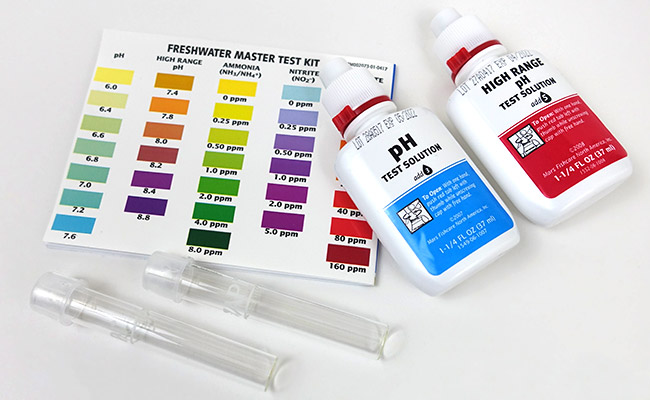





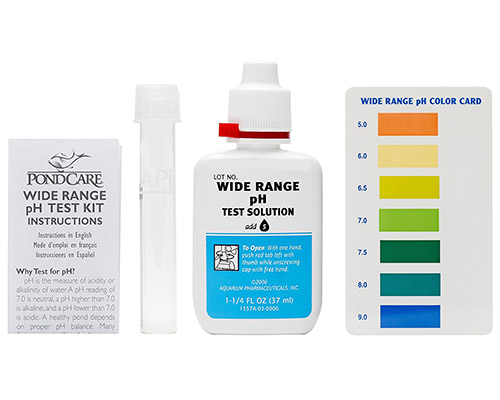
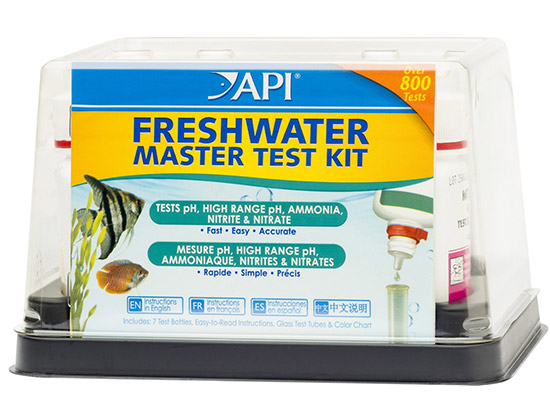

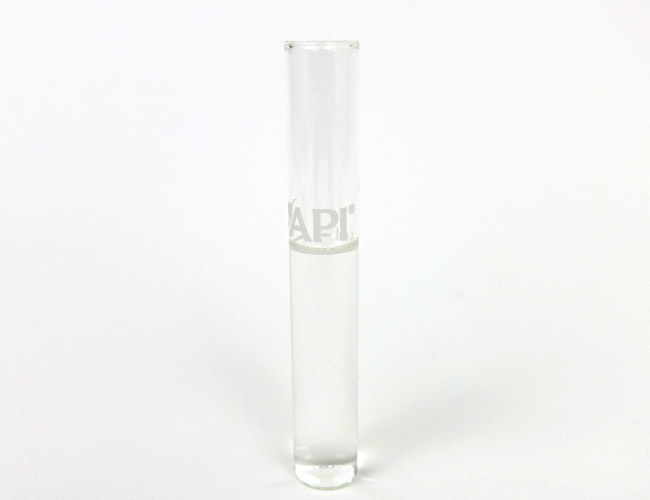
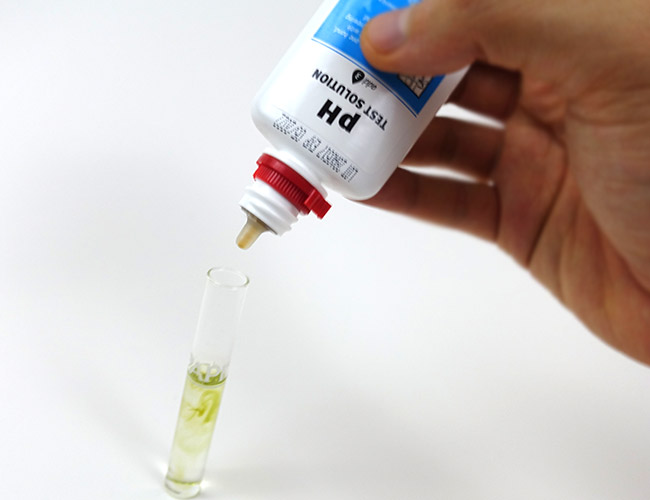
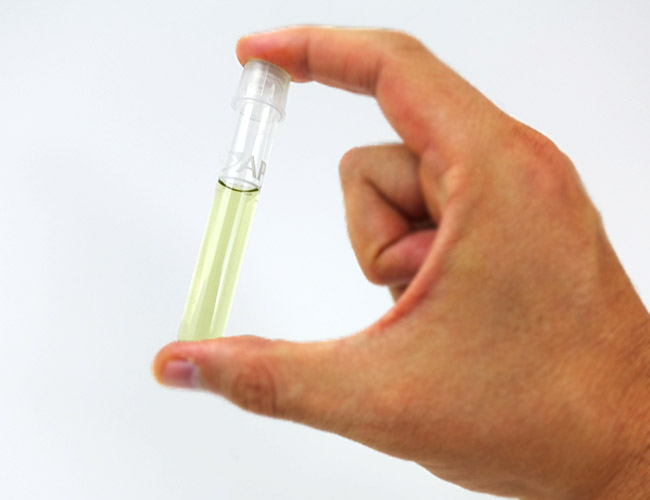

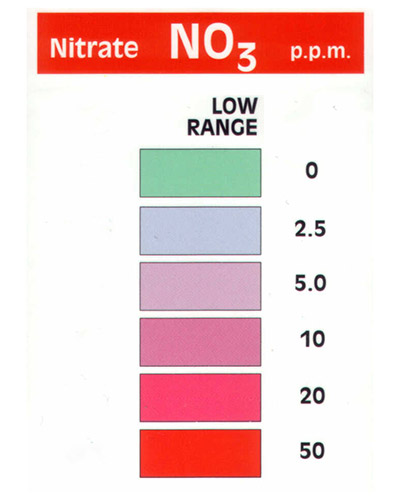
Comments (40)
Thank you. I have the kit but I lost the card to show difference in colors. Hugs
Hi Bruce,
You gotta hold onto those! The color matching cards included in the test kits are like gold – without them you are flying blind.
If you have lost or damaged your API Test colour chart, It is very easy to search Google and bring up loads of Photos of the chart, Naturally the colours may differ from the chart in your hand, But it does give you an approx’ colour,
If you have or know someone with a good quality printer and print a High Resolution photo of the API this could be a great help, Just remember the colours may differ slightly, So, Don’t go throwing away your test kit, or buying another just for a card. Have a look online… Hope this helps a bit …
Is there a reason why my ammonia test isn’t working? For a reading of 0ppm it says it should be green but the solution I have remains clear. Do I have a faulty test kit?
Hi Alan,
It certainly is possible you have a faulty ammonia test. If you check the expiry date printed on the bottle, is it current?
Are you using the two bottles supplied for the ammonia test? First bottle one and then bottle two in the same test tube.
I was using IPA tests for some time. Recently it was a huge (and expensive) disappointment.
all of a sudden Nitrite test in the kit is “Yes or NO”. I got some algae problem in my planted tank, so I started to look what is the cause for this. I was not testing water for last couple years, there was no need, so I was surprised when test reading was around 80ppm. I started to make daily 30-40% changes. By the end of the week test results was the same. I tested my RO and my tub water. 60ppm. Ok, probably bad test. I bought a new one. The same readings. 80ppm for the tank, 60ppm for tub and filter, 0 for bottled water and water that was left from resent rain. So, I desided that a filter that may be not working because something happened to membrane. I ordered the whole new cartridge set. Test readin for filtered water changed to 0. Ok, filter is working, test is working, 60 ppm is above the recommended federal limit for tap water. I would say that with 60ppm nitrate its non potable water. And my annual water quality report tells that average Nitrite level is 0.4ppm. We are having a local catastrophe here. so I requested my water utility take a sample to get tested at a lab. They came back with 5.6ppm (More than average 0.4 but That may be a result of last two weeks heavy rain), a massive difference from what I measured. I still was concerned and paid to accredited lab to do tests for me. 5.7ppm. So water company was not lying. I started to mix RO and tub water to see different test readings. There was no orange readings at all, only red and yellow. So, I guess, test is telling me only “almost no Nitrate” ore “there is some Nitrate detected” but not telling how much. This makes test completely useless. I know that there are some Nitrates in my tank, I need to know how much. And I am not the only one running into this issue with that test.
Hi Irina,
I am a little confused here, are you talking about API? (you wrote IPA), if so, I wish I could help you here. I am just wrapping up a test where I have reviewed a variety of different tests such as seachem, salifert, API, etc. and all of them are pretty much bang on when used correctly. While some are certainly more precise than others, None were out so much (or tested false positives in RO water) that I wouldn’t recommend them. All samples used in tests were sent to a lab in Germany to verify accuracy. I do have to ask, are you testing indoors, with the lights on? This can drastically skew the colors given off. Ideally, you would want to test outside in natural daylight or use a daylight globe that is used in photography.
I just bought a tank (5 gallon) 3 weeks ago and then was given a 10 gallon for my birthday, on the same day. Sigh. I can’t tell you how much time and money I’ve spend on these little things. I had 3 mollies and 3 guppies in the 10 gallon and it was cloudy from setting it up yet but all API Master Kit tubes numbers were 100% within great area. I was testing it daily since I’m OCD about these little guys. 🙂 One of the mollies, of course, had babies the second she got in the tank and so I set up the 5 gallon and put the little ones in there when I realized OMG there’s babies! They’re nice tanks – real plants, a snail each and decent gravel. Two days ago I noticed one of the guppies laying on the bottom panting and I knew it was dying. When I’d go to remove it, it’d flee away only to fall on it’s side at the bottom or stand on it’s tail on the bottom. It was hard to watch and yep, this morn I found it dead hiding behind a rock. Water tested fine. 100% on all counts.
By the afternoon I noticed 2 other fish doing this “hiding up at the top” thing and fanning frantically. At a loss I brought a water sample to the local Fancy Aquarium Fish Store, which everyone hates because they are arrogant, can’t be bothered and are too cool to talk to you or sell you fish. They did a test strip test and it showed I was utterly hammered with ammonia. The fish had ammonia poisoning. They sold me some “Stability” adjuster, told me to add the capful to the 10g and half a cap to the 5 and all I could do was wait. Maybe they’d all die, maybe not, maybe they’d recover, maybe not.
As I type this, all but one is not doing well. I can tell they’re going to die. I asked the guy at the store, since I’m new and dumb at all this, “Oh! Should I buy those strips? Do you sell them?” and he quickly said NO. (I was kinda of just doing this to be a jerk because I have the Master Kit and they weren’t really talking to me. They pulled out the strip, looked at each other knowingly, and acted like I wasn’t there. So I was being a pest on purpose) I noticed he’d turned the can of strips away from me so I could’t see the brand name and they both briskly walked away from their test table when I asked if I ought to get those. I thought either they have a magical, wondrous way to test water or they’re cheap strips and they just like charging people to test water.
I have looked online all over and don’t see anything sold in this type of can. They were the strips with the little individual pads spaced out, long white strips, and he had one with several on them and then a 2nd strip with just 1 on it. After looking I assume this 2nd strip was Ammonia since I see strips that look like this but don’t have ammonia on it – that’s separate. The can was tall, white, cardboard, and had the color-test- result grid on the back with the colors running vertically, not wrapped around the can.
So, I’m doing what I’m told. I have every chemical the Pet store sells to adjust things as I’d need and I have been meticulous about reading and learning. I just cleaned out 50% of the 10 gallon tank’s water 5 days ago and added PRIME and a bit of STRESS COAT. As I’m reading how inaccurate strips can be, I wonder then what the problem here is – the snooty fish store and their test strips or why didn’t the API test kit’s stuff show me I had a massive problem?
I am sad I will lose my fish, I think the frys are ok. They hide so much I can’t tell, but they at least aren’t up at the top or at the bottom heaving and shaking. I asked the Snot Head fish guy if they could possibly have “shimmy’ or a bacterial or fungal thing and he said NO! Like I was just stupid, and said the stuff he gave me is like a sponge in a smoky room and I just have to wait until the ammonia goes through the chemical. It will take a day or so and if the fish die, they die.
I am confused, but always happy to learn and happy to keep smugly thinking the fish store people up the street are jerks. Advice please? and thank you!
Hi Rene,
Wow what an ordeal, I’m so terribly sorry to hear you have gone through this. Your problem was almost certainly that the tank was uncycled. This is the first step to every tank should go through before adding fish. I suggest reading up on my cycling guide for more information about this process.
Your theory on the test kit is correct – they used two test strips, a 5, 6 or 7-in-1 and an ammonia strip. All ammonia strips are separate. As for the brand, the reagents typically used on these strips are identical, so it shouldn’t matter which you choose.
With that said, an API master test kit should definitely be picking up excess ammonia – it’s what it does. Are you checking in natural daylight? Indoor lights can make the test colors look off.
For reference, here is an ammonia progression chart using the API test kit. It’s colors will vary according to your screen settings, but it should give you a rough idea.
My water always turn green once I add any type of fish food. What would I test my water for.
Im changing my water every 2 to 3 days.
I was told to change my filter from a 10 gallon one to a 20 gallon on a 10 gallon fish tank.
Change the fish food from color to no color fish food.
None of this is the problem.
I now feed my fish once a day and sometimes twice but this doesn’t work.
Please help
Diane
Hi Diane,
What are your current ammonia, nitrite and nitrate levels?
New to the hobby (6 months). I find API color charts very difficult to read accurately. Every local fish store fishkeeper I talk to says the API kit is terrible and a waste of money. After hearing this half a dozen times from different stores, I decided to try another brand, and was surprised how much easier the colors matched the charts.
Hi Dana,
For a complete kit under $20, you can’t beat the range of tests for the price – it makes them perfect for beginners. They are much easier to read under natural daylight.
As for them being “terrible” I have been in the hobby for 30 years and that is hardly the common consensus – they are more than capable of testing your parameters and many successful fishkeepers use them as their sole testking kit.
That said, if you want to pay more, there are numerous options out there. I personally like Salifert – but they sell their kits separately and are considerably more expensive.
I don’t trust the Salifert ammonia kit. I have a Hanna multi parameter and tested the test kits using measured ammounts of ammonium chloride.
API, NT Labs & Tetra gave the closest reading but Tetra leaves a residue in the test tube.
Colombo and Kusuri weren’t very good but the worst performer was Salifert. The Salifert kit read 0 after all the others identified ammonia.
I do use Salifert for testing KH. There is no KH test in the API kit as far as I am aware?
(Stands up on soapbox)
Why is it that none of the test kits contain a test for the most deadly contaminate of them all?
A chemical present in all tap water. ie
Chlorine / Chloramine
Not only will it kill your fish on its own, it will also kill your filter bacteria, which will lead to an ammomia spike, which will kill your fish. Following the ammonia spike will be a nitrite spike, which will kill your fish.
One last thing, chlorine and chloramine DO NOT “gas off” overnight. Even if heavily aerated.
If heavily aerated for 24 hours, there wil be a slight decrease in chlorine levels but it will still be toxic to fish.
There is another essential practice of using a test kit to monitor water parameters. Keeping a log!
I use the Notes app on my iPad but having a dedicated paper notebook works well too.
Each tank has its own page. On each page I make a table with columns titled, Date, Nitrate before, ph, Nitrate after, ph, temperature. The last column is really important, Notes. The columns are different depending on if the tank’s it’s cycled or not…
Every time I test the water I record the test results in the table. In the Notes column things like whatever is happening good or bad, change of gear, new foods fed, % of water replaced, quantity of debris, fish health, etc. is written.
The “big picture” perspective reveals itself by accumulating all the data week to week. Seasonal patterns, the success (or not) of changes in care, timing, medication, fish behavior etc become more obvious.
The knowledge gained keeping a log is valuable & fascinating!
Hi again Torchstar,
YES! I used to do this with paper, but with my doctors scrawl and multiple tanks, I soon had a pile of unorganized paper that I couldn’t make sense of. I know use an Ipad, the pencil and the Nebo app – it converts my terrible handwriting into typed text, it’s the best thing ever. If you have the pencil, I highly recommend checking it out. It does take some getting used to though but it’s faster than manually typing on the on screen keyboard!
Your attention to detail is amazing with the data kept – I’m sure if ever something was to go wrong, you could pinpoint the exact change that caused it.
Thanks again for sharing your valuable advice!
It’s my pleasure to share with any helpful tricks with Fishlab that keep my beloved wet pets thriving…
On the subject of water testing
I forgot to mention it’s REALLY important to rinse the glass test tubes and plastic caps thoroughly afterwards.
That means more rinses under running water in the sink than you think. The reagent you drip into the water for one test, if even a tiniest trace is left in the tube, will drastically mess with the results of another. Especially when testing Ph, a dirty tube or cap will make the Ph appear extremely acidic. When any test result is ‘off the charts’ test the water again with a different well rinsed tube. Do not start doing things to ‘correct’ the tank water until a second or third test result indicates there is a problem.
That’s actually a really neat piece of advice, one that I’m going to need to add to my beginners cycling guide when I fiiiinally find time to update it – I’m confident people are doing incorrect testing based on my discussion in the comments.
It’s funny, when you have “just gone though the motions” for tens of years, it’s hard to break down each and every step as it’s just habit for you. I am really digging your perspective!
Thanks so much again for sharing!
Hi,
I find it best to do a final rinse using Distilled water, Very cheap online for 5 litres.
Being steam water all the hardness and any chemicals have been removed, And if you remember from your chemistry lessons @ school, You would rinse your test tubes out with Distilled water before you did any test with them.
So, wash-rinse well with tap water, Final rinse with Distilled water and dry well before replacing the lids, Lids too rinse with distilled water. little precautions saves a lot of hassle or loss of fish…
Testing your water is a scam and a waste of time
Hi Henry,
Interesting theory. Would you like to share your supporting information?
Yeah, it’s better to spend your money on replacing the fish that have “just died” right?
Hey there! I work at a local fish store and have been testing lots of peoples water for quite some time. Recently I have been getting samples of peoples water that is a day or even two days old who want it to be tested, but, some time ago I heard the results will be inaccurate if the water sample has been left out for to long. So I phoned the customers to say I couldn’t test the water in fear of giving them incorrect results (To the customers displeasure…). Am I doing the right thing or will parameters remain consistent at room temperature for a prolonged time?
Thanks for your help!
Hi Nolid10,
Excellent question. This is a debated topic, but I personally think it is fine. Consider the ATI ICP-OES test. It is one of the most respected tests in the industry. You buy the kit, take your samples then send it over to Germany. They test the water after it lands. I don’t know if you have ever had something mailed from overseas, but it takes more than a few days to arrive.
Perfect!!
I was unaware of the German testing program! Thanks for your help!!
Can a marine test kit be used on a freshwater tank?
Hi Kim,
Depends on the brand and where you are located in the world. Some ammonia kits work on both, some don’t. Nitrite generally works the same for both. Etc… In the United States, last time I queried this with Mars Fishcare (API) they said it was the same. However, this is going back 5 or so years now and things may have changed. Your best bet is to buy the right kit for the your tank – you are trusting the lives of your fish to these results. It’s important that they are accurate.
Hi there,
Could I jump in here and ask about the volume of water in the test tube. Do you measure to the meniscus or the top of the water line? I have been away from the hobby for a dozen years and IIRC, in the past, the test kits said to measure to the meniscus but my new test kits make no mention of it.
Given that the hobbyist test kits are not lab quality do you think the test kit’s accuracy is not impacted by where the fill line should be measured to?
Interested in your thoughts.
Hi Christine,
The API test kits and many others have a line that you fill too. So do the other commonly available ones. To be honest, I’ve never given a thought to this phenomenon. Can anyone else weigh in here?
The difference between raising the water level from the edge of the meniscus and the bottom apex of the curve Is only one drop of water or so. The precision of this kit is low enough that it doesn’t matter. Do it both ways and convince yourself. I usually shoot for the line to bisect the arc of the meniscus and recommend consistency rather than perfect. It’s the trends of your tests that matter the most anyway. I challenge anybody to notice a color difference from one or two drops of tank water on either side of that fill line.
Hi Jeff,
Thanks so much for your thought out answer, it makes perfect sense.
I’m a beginner, now that you’ve tested your aquarium water and found out it is high or low results. Then what should you do?
Hi Arnold,
It’s generally to ensure your tank is cycled and in good order for your fish. For more information on the cycling process, read this guide:
https://fishlab.com/how-to-cycle-aquarium/
Hi Ian. We have a 350 ltr corner tank, and up until yesterday the water was fine, it has rapidly deteriorated over night to the point where can can barely see in the tank (to add, pretreated bogwood was added in yesterday) Did a test strip (all we have) and the results are ;
120
40
6.5
0
0
We are new to this so don’t fully understand. The results chart say Danger on some of these but now I don’t know what I need to do to right these. Any advice?
Thanks
Hi Gemma,
What brand is the test kit? Unfortunately, without the measurements I can’t tell what those numbers mean. If you can list what each of those numbers represents, it would help me troubleshoot.
Did I miss something? Please explain why it was concluded that The API Master Test Kit “outshines the rest”. Although I don’t use it, what about the NT Labs Aquarium Lab Multi-Test? Against which other products was The API Master Test Kit evaluated?
One other comment that I would make is that the words – precision and accuracy are used interchangeably but resolution doesn’t appear to get a mention. In the world of measurement, should we not just use the words ‘accuracy’ and ‘resolution’?
Hi Mr C.
Good questions, this guide is due for an update to include the ATI ICP-OES for a range of tests results but unfortunately I have not gotten around to as of yet.
For the price and being a complete kit for beginners (that this blog is aimed at) the API test kit is comparable to more expensive kits which require you to buy each individual test kit seperately, which can prove costly.
These were tested against:
Salifert
Nutrafin
Seachem
Sera
You must be located internationally. We do not have NT Labs test kits commonly available here in the USA.
I have an API nitrate kit. It reads about 10 times that of a NT kit. Both read zero for distilled water though. The API kit does not have an expired date. Do they go off? You must be from the UK, we don’t have NT Labs test kits here in the US.
Hi Graham,
Test kits do go off, they typically last about 3 years. API test kits should have the date printed on them.